Radiolarites and radiolarians from the Chenaillet-Montgenèvre ophiolite (Piemonte zone, French-Italian Alps)
More than 100 years after initial biostratigraphic attempts (Parona, 1890; Squinabol, 1912), diagnostic radiolarians were finally extracted from the 'Rocher de la Perdrix' radiolarites, a sedimentary rock unit traditionally associated with the magmatic rocks of the Chenaillet-Montgenèvre ophiolite.
These radiolarians
of Middle Jurassic age (tentatively middle Bathonian) also provide the
first direct age determination from oceanic sediments on the Briançon
map sheet. This age is older than those previously established on ophiolite
sedimentary covers from this segment of the western Alps and shows that
Lago Nero-Replatte thrust sheet basal radiolarites are older than the
youngest intrusives from the overlying Chenaillet s.s. thrust sheet. It suggests that the two thrust sheets are distinct and distant pieces
of lithosphere that were eventually stacked together. Regionally, the
Lago Nero-Replatte sediments appear to be coeval to other Bathonian supraophiolitic
radiolarites exposed in the Alps. These results strengthen the Bathonian
correlation of widespread seafloor spreading in both western Tethys and
the central Atlantic ocean.
Cordey F. & Bailly A. 2007. Alpine ocean seafloor spreading and onset of pelagic sedimentation: new radiolarian data from the Chenaillet-Montgenèvre ophiolite (French-Italian Alps), Geodinamica Acta 20/3, p. 131-138. https://doi.org/10.3166/ga.20.131-138
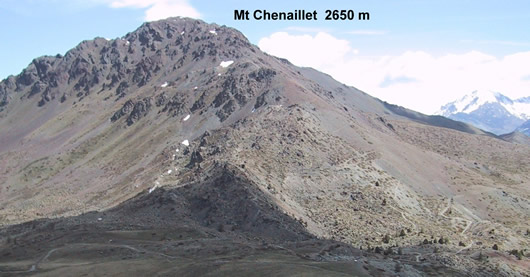
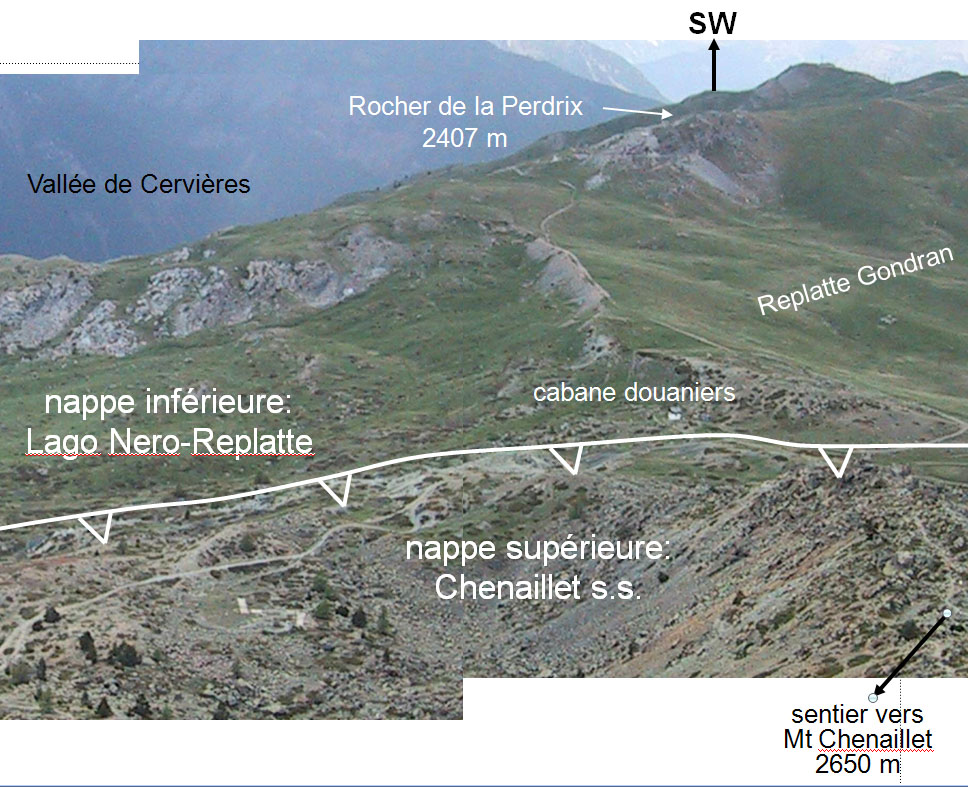
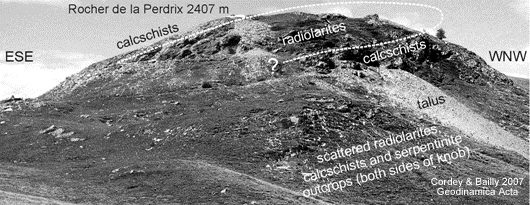
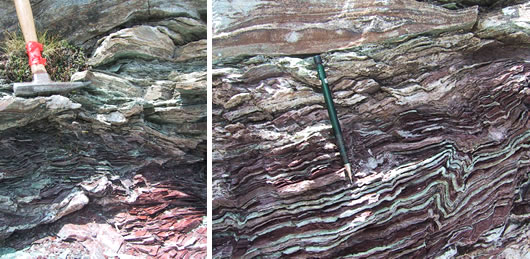
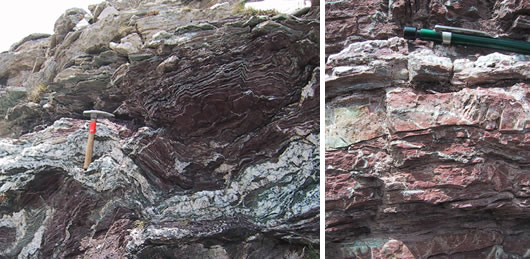
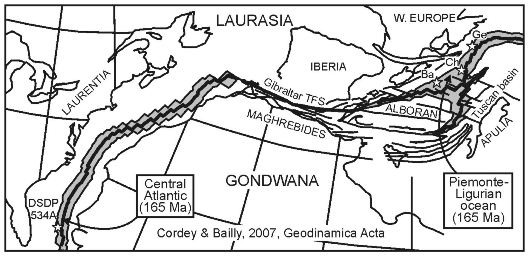
A widespread group of radiolarite units associated with initial oceanic crust of Bathonian age is documented in the French-Swiss Alps (Gets nappe, Bill et al., 2000) and in Corsica (Balagne nappe, De Wever et al., 1987). Our results suggests that the Lago Nero-Replatte succession is part of this domain. It also means that radiolarites from the Piemonte zone could be more diachronous than previously established (middle Bathonian from this study, late Bathonian-early Callovian from Traversiera massif, middle-late Oxfordian from Queyras). It strengthens the interpretation that the corresponding ocean was formed over an extended period of time. As stressed by previous authors (Bill et al. 2000), Bathonian was a time when siliceous sedimentation became common to the entire Alpine Tethys.
References
Bill, M., O’Dogherty, L., Guex, J., Baumgartner, P.O., Masson,
H., 2001. Radiolarite ages in Alpine-Mediterranean ophiolites: Constraints
on the oceanic spreading and the Tethys–Atlantic connection, GSA
Bulletin, 113, 129–43.
De Wever, P., Danelian, T., Durand-Delga, M., Cordey, F., Kito, N.,
1987. Datations des radiolarites post-ophiolitiques de Corse alpine à
l’aide des Radiolaires, C. R. Acad. Sci. Paris 305, 893-900.
Parona, C. F., 1890. Sugli schisti silicei a radiolarie di Cesana presso il Monginevra, Atti della reale Accademie delle Scienze di Torino, 27, 305-319.
Squinabol, S., 1912. Radiolari della strada nazionale al Monginervo. Bollettino del reale Comitato geologico d’Italia, 43, 2-3,
281-289.